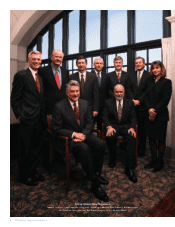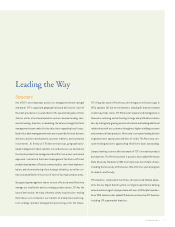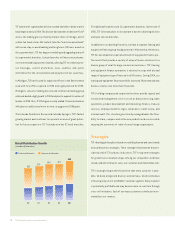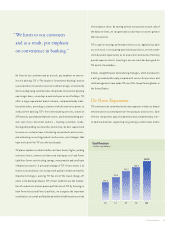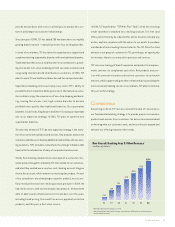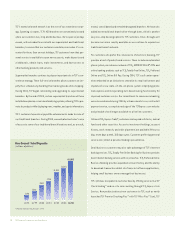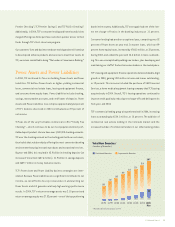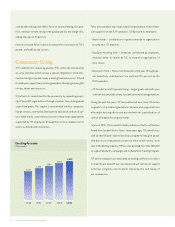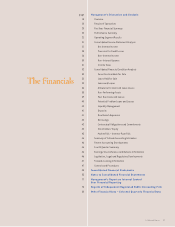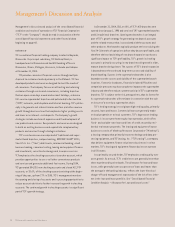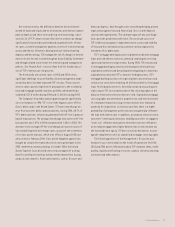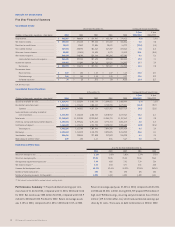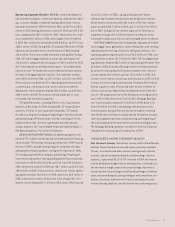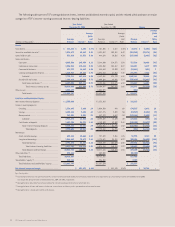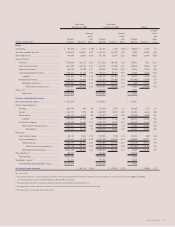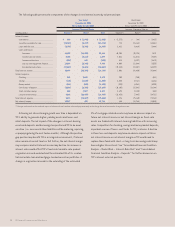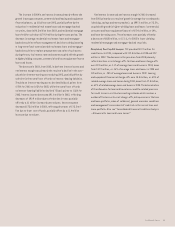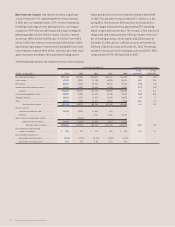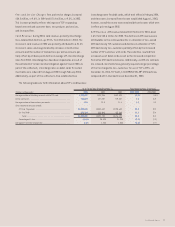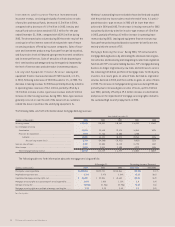TCF Bank 2004 Annual Report Download - page 20
Download and view the complete annual report
Please find page 20 of the 2004 TCF Bank annual report below. You can navigate through the pages in the report by either clicking on the pages listed below, or by using the keyword search tool below to find specific information within the annual report.
18 TCF Financial Corporation and Subsidiaries
Management’s discussion and analysis of the consolidated financial
condition and results of operations of TCF Financial Corporation
(“TCF” or the “Company”) should be read in conjunction with the
consolidated financial statements and other financial data
beginning on page 48.
OVERVIEW
TCF is a national financial holding company located in Wayzata,
Minnesota. Its principal subsidiary, TCF National Bank, is
headquartered in Minnesota and had 430 banking offices in
Minnesota, Illinois, Michigan, Wisconsin, Colorado and Indiana
at December 31, 2004.
TCF provides convenient financial services through multiple
channels to customers located primarily in the Midwest. TCF has
developed products and services designed to meet the needs of
all consumers. The Company focuses on attracting and retaining
customers through service and convenience, including branches
that are open seven days a week and on most holidays, extensive
full-service supermarket branches and automated teller machine
(“ATM”) networks, and telephone and Internet banking. TCF’s philos-
ophy is to generate net interest income and fees and other revenue
growth through business lines that emphasize higher yielding assets
and lower or no interest-cost deposits. The Company’s growth
strategies include new branch expansion and the development of
new products and services. New products and services are designed
to build on existing businesses and expand into complementary
products and services through strategic initiatives.
TCF’s core businesses are comprised of traditional and super-
market bank branches, campus banking, EXPRESS TELLER®ATM’s,
Visa U.S.A. Inc. (“Visa”) debit cards, commercial banking, small
business banking, consumer lending, leasing and equipment finance
and investment, securities brokerage and insurance services.
TCF emphasizes the checking account as its anchor account, which
provides opportunities to cross-sell other convenience products
and services and generate additional fee income. During 2004,
TCF generated 504,310 new checking accounts and closed 412,979
accounts, or 28.6%, of the checking accounts existing at the begin-
ning of the year, up from 27% in 2003. TCF’s management monitors
the opening and closing of accounts and is pursuing opportunities to
reduce account attrition to further increase the growth in checking
accounts. The continued growth in checking accounts is a significant
part of TCF’s growth strategy.
At December 31, 2004, 258, or 60%, of TCF’s 430 branches were
opened since January 1, 1998 and consist of 197 supermarket branches
and 61 traditional branches. Opening new branches is an integral
part of TCF’s growth strategy for generating new deposit accounts
and the related revenue that is associated with the accounts and
other products. New branches typically produce net losses during the
first 24-36 months of operations before they become profitable, and
therefore the level and timing of new branch expansion can have a
significant impact on TCF’s profitability. TCF’s growth in checking
accounts is primarily occurring in new branches with growth in older,
mature branches being slower. The success of TCF’s branch expansion
is dependent on the continued long-term success and viability of
branch banking. Success in the supermarket branches is also
dependent on the success and viability of the supermarket branch
locations. Economic slowdowns, financial or labor difficulties and
competitive pressures may have an adverse impact on the supermarket
industry and therefore reduce customer activity in TCF’s supermarket
branches. TCF is subject to the risk, among others, that its license for
its supermarket branches will terminate in connection with the sale
or closure of a store by a supermarket chain.
TCF’s lending strategy is to originate high credit quality, primarily
secured, loans and leases. Commercial loans are generally made
on local properties or to local customers. TCF’s largest core lending
business is its consumer home equity loan operation, which offers
fixed- and variable-rate loans and lines of credit secured by resi-
dential real estate properties. The leasing and equipment finance
businesses consist of Winthrop Resources Corporation (“Winthrop”),
a leasing company that primarily leases technology and data pro-
cessing equipment, and TCF Leasing, Inc. (“TCF Leasing”), a company
that delivers equipment finance solutions to businesses in select
markets. TCF’s leasing and equipment finance businesses operate
in all 50 states.
As a primarily secured lender, TCF emphasizes credit quality over
asset growth. As a result, TCF’s credit losses are generally lower than
those experienced by other banks. The allowance for loan and lease
losses, while generally lower as a percent of loans and leases than
the average in the banking industry, reflects the lower historical
charge-offs and management’s expectation of the risk of loss inher-
ent in the loan and lease portfolio. See “Consolidated Financial
Condition Analysis – Allowance for Loan and Lease Losses.”
Management’s Discussion and Analysis


